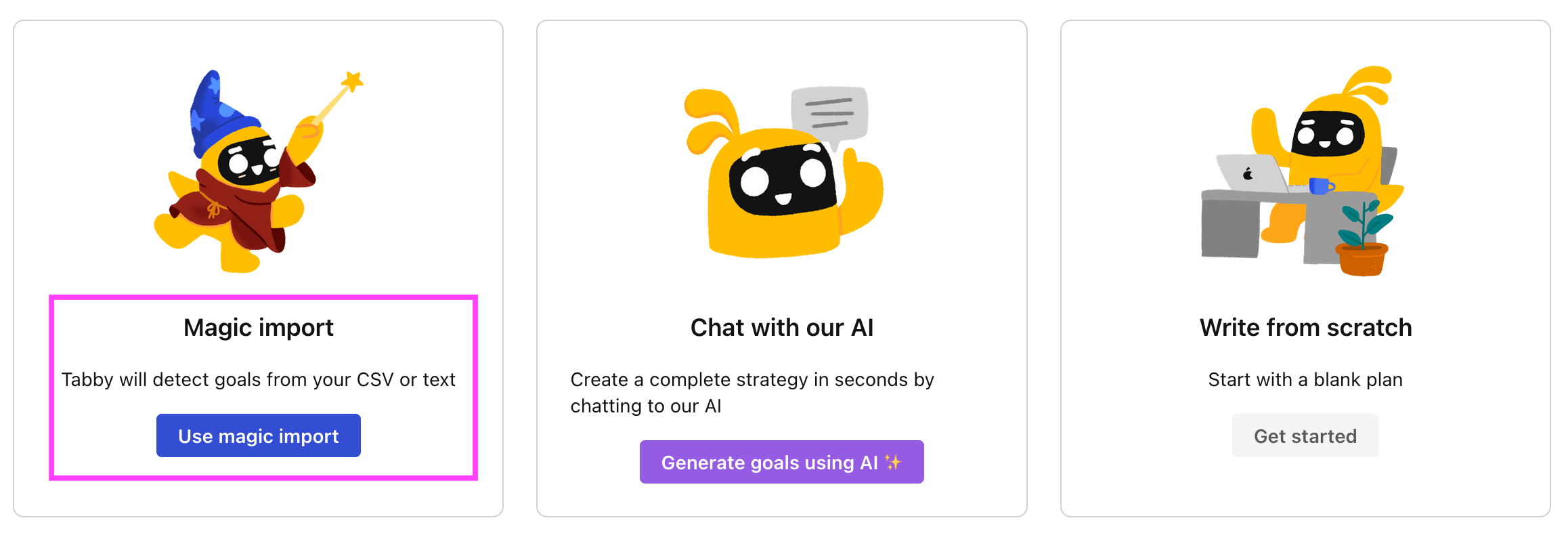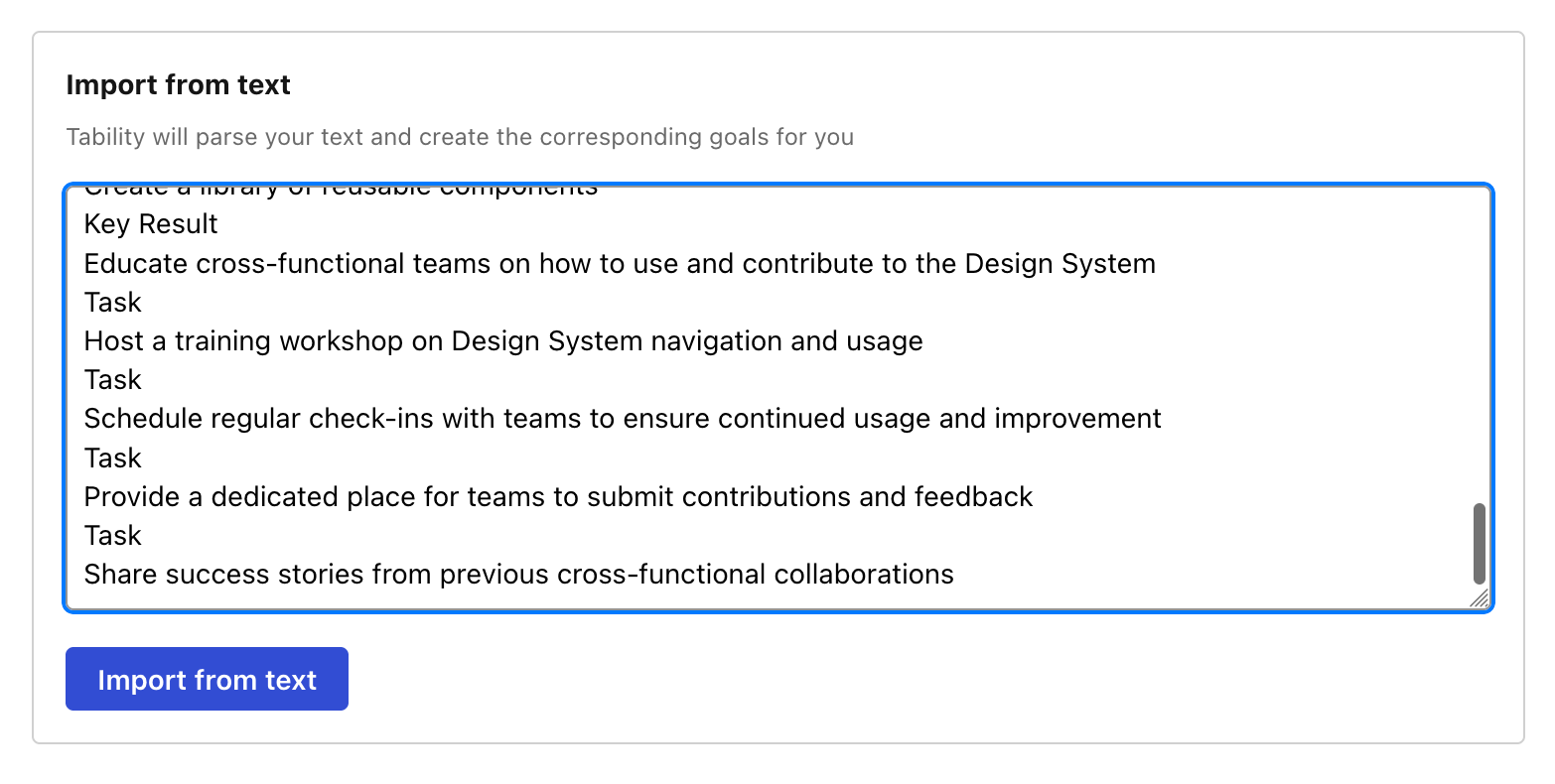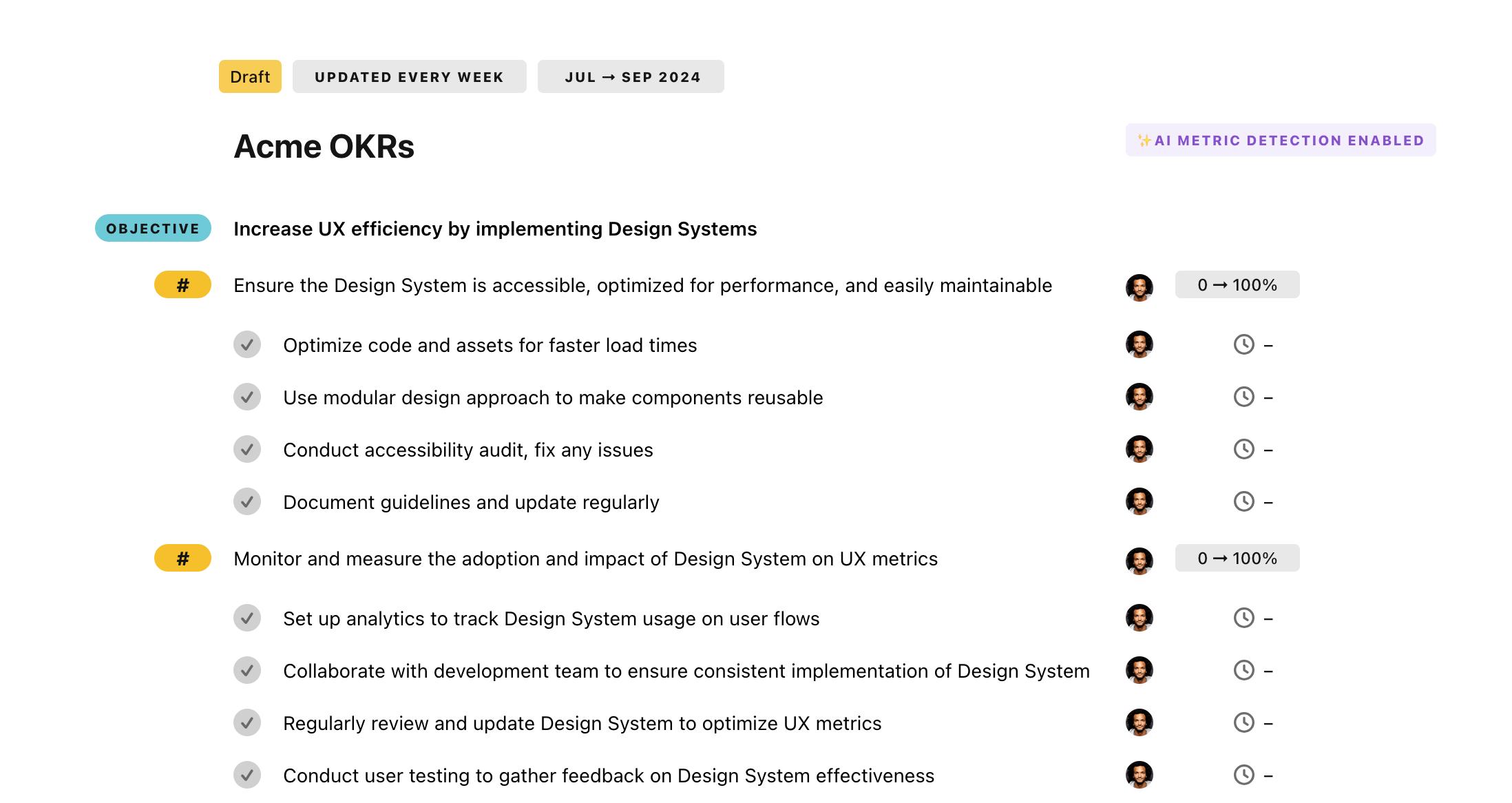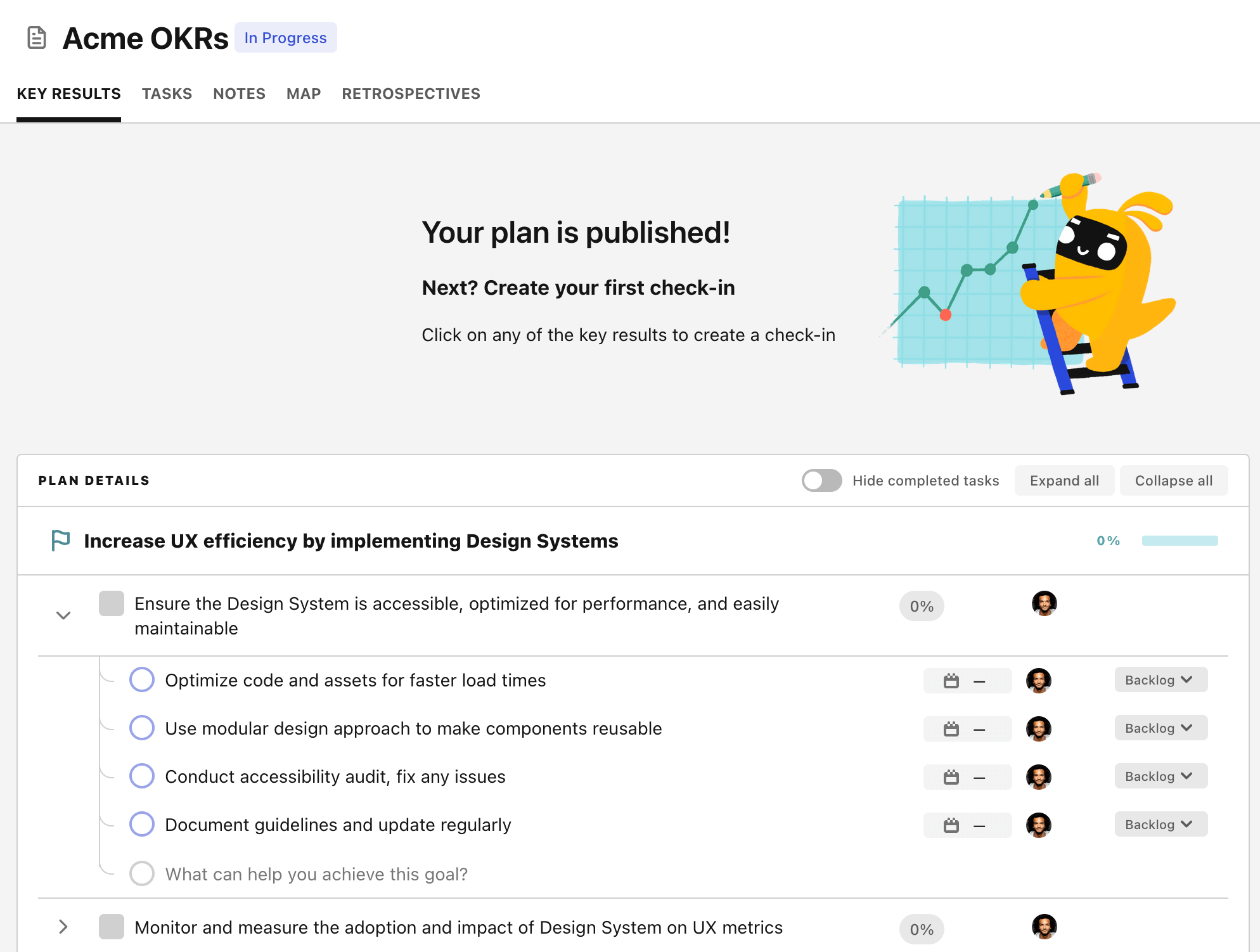OKR template to improve efficiency in delivering book materials to students
Your OKR template
The second outcome aims to garner a minimum of 90% positive feedback from beneficiaries of the improved service. This is to be accomplished by deploying the new system for convenient access, collating feedback and then integrating changes based on student suggestions, ensuring a student-centric system.
The third outcome targets a reduction in delivery duration of learning materials by 20%. Implementation of an enhanced logistical software for proficient dispatching and monitoring is a key initiative. Additionally, fostering alliances with faster delivery services and refining order procedures are also crucial strategies.
In summary, the OKR aims to elevate the effectiveness and speed of delivering educational materials. The steps include setting up a new system, collecting student feedback for necessary improvements, and reducing delivery time by optimizing logistics, forging partnerships for quicker service, and streamlining order procedures.
ObjectiveImprove efficiency in delivering book materials to students
KRImplement a new book to student delivery system improving work-flow by 30%
Draft a blueprint of proposed new delivery system
Implement and test new delivery system
Research current book delivery methods and identify inefficiencies
KRReceive 90% positive feedback from students on the improved material delivery efficiency
Implement new material delivery system for easier access
Gather feedback after each lesson to assess changes
Make necessary improvements based on student suggestions
KRReduce delivery time of materials from books to students by 20%
Implement advanced logistical software for efficient dispatch and tracking
Build partnerships with reliable, faster delivery services
Streamline order processing and packaging procedures
How to edit and track OKRs with Tability
You'll probably want to edit the examples in this post, and Tability is the perfect tool for it.
Tability is an AI-powered platform that helps teams set better goals, monitor execution, and get help to achieve their objectives faster.
With Tability you can:
- Use AI to draft a complete set of OKRs in seconds
- Connect your OKRs and team goals to your project
- Automate reporting with integrations and built-in dashboard
Instead of having to copy the content of the OKR examples in a doc or spreadsheet, you can use Tability’s magic importer to start using any of the examples in this page.
The import process can be done in seconds, allowing you to edit OKRs directly in a platform that knows how to manage and track goals.
Step 1. Sign up for a free Tability account
Go tohttps://tability.app/signup and create your account (it's free!)
Step 2. Create a plan
Follow the steps after your onboarding to create your first plan, you should get to a page that looks like the picture below.

Step 3. Use the magic importer
Click on Use magic import to open up the Magic Import modal.
Now, go back to the OKR examples, and click on Copy on the example that you’d like to use.

Paste the content in the text import section. Don’t worry about the formatting, Tability’s AI will be able to parse it!

Now, just click on Import from text and let the magic happen.

Once your example is in the plan editor, you will be able to:
- Edit the objectives, key results, and tasks
- Click on the target 0 → 100% to set better target
- Use the tips and the AI to refine your goals
Step 4. Publish your plan
Once you’re done editing, you can publish your plan to switch to the goal-tracking mode.

From there you will have access to all the features that will help you and your team save hours with OKR reporting.
- 10+ built-in dashboards to visualise progress on your goals
- Weekly reminders, data connectors, and smart notifications
- 9 views to map OKRs to strategic projects
- Strategy map to align teams at scale